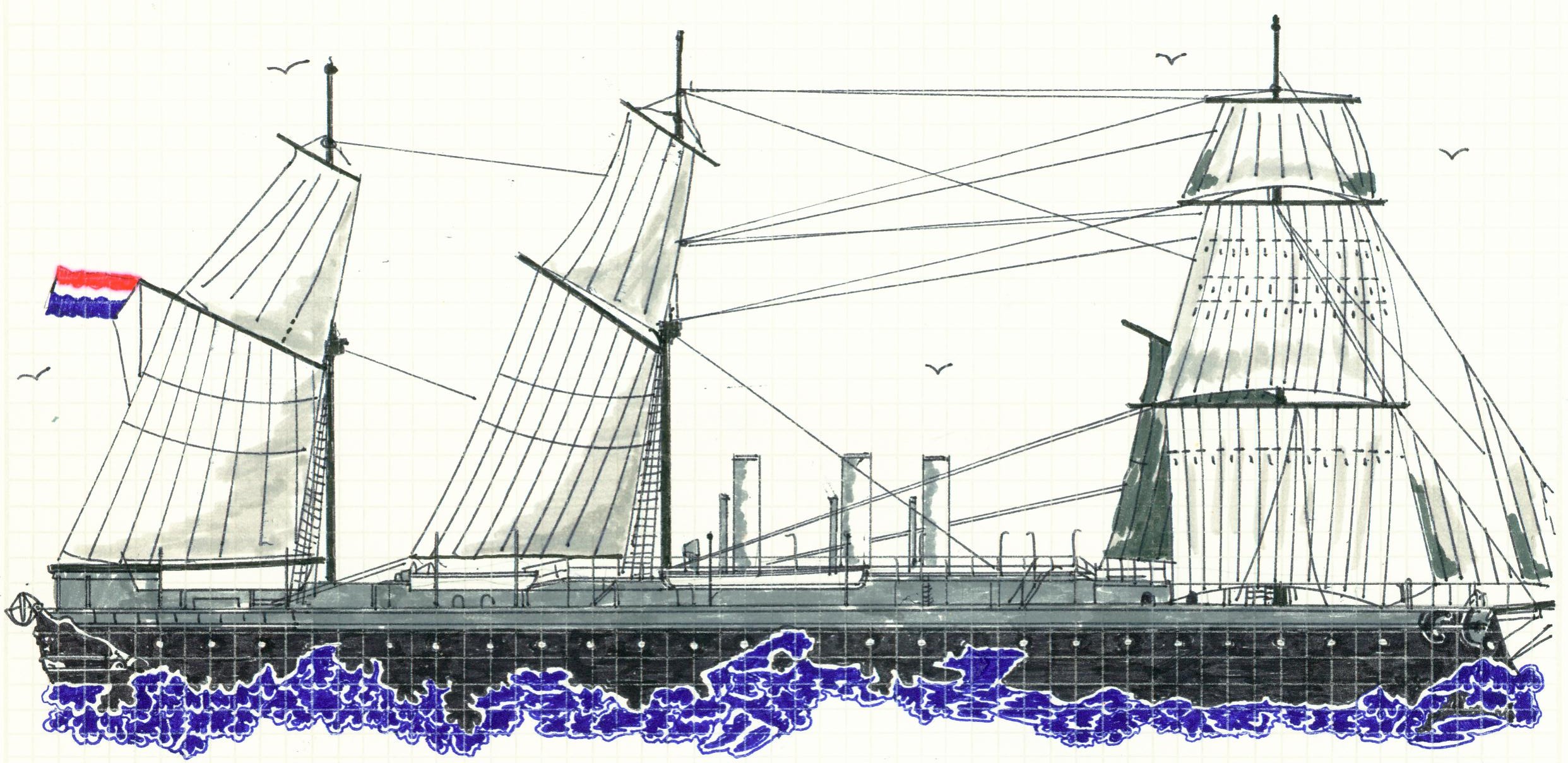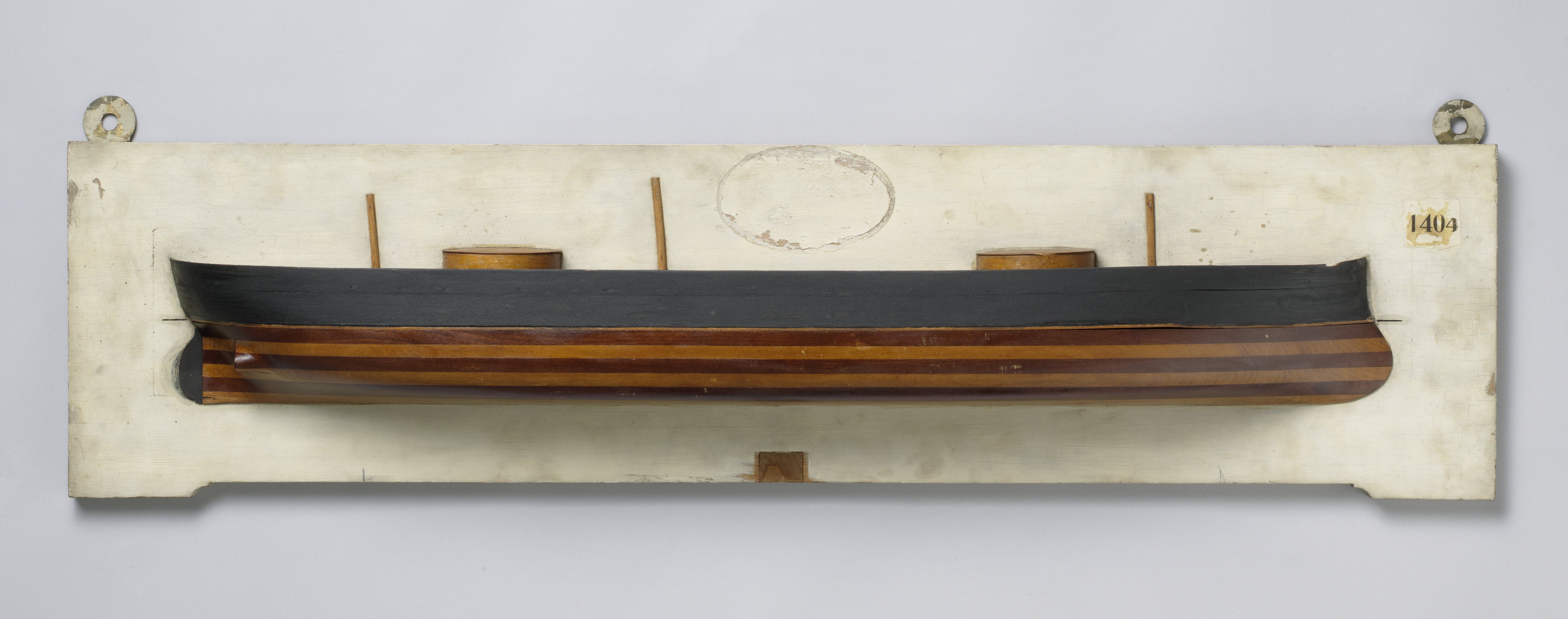Rijksmuseum Amsterdam. Original source
The Dutch ram turret Zr. Ms. Koning der Nederland (1) captain W. Enslie (2) departed on 3 March 1878 towards the Dutch East Indies where she arrived at 6 May 1878 at Atjeh and added to the auxiliary squadron in the Dutch East Indies. From Aden was the next stop at Bombay, British Indies arriving there on 20th April 1878 and departing on the 25th. Accompanied by some of his officers visited the Dutch commanding officer the boat lift on Hog Island (3) where it was possible to lift within 35 minutes warships with the size of the HMS Bellerophon (4) to clean and paint. The lift was owned by the British government but hardly used anymore due to the very strong currents on the location. Building costs 35.000 pound sterling.
Notes
1. The ship was designed by B.J. Tideman before the Noordzeekanaal was available, so it was a comprise between armour, artillery and horsepower. The result was a stern which was to 'full' and forced shaped. Ram turret, call sign GQMB, originally she was to be named Matador, on stocks at the naval yard at Amsterdam, Netherlands 28 November 1871, renamed Koning der Nederlanden on 24 February 1872 (other source claims even 24 April 1874), launched on 28 October 1874, commissioned on 16 February 1877 (other source claims 15 August 1876), transferred to the Indische Militaire Marine in 1894, decommissioned 1 April 1895, in August 1896 started the rebuilding at the naval yard at Surabaya, Dutch East Indies as a guard ship, commissioned on 1 December 1899, stricken in 1914 and became accommodation ship for the crew of the ships which were repaired and later for the submarine force, by Dutch navy personnel at Surabaya set on fire and sunk to prevent capture by the Japanese on 2 March 1942. Dimensions 81.78 (loadline between perpendiculars)-85.24 (over all) x 15.20 (over outside armour)x 5.83/8.93m, 5400 ton displacement , 2 engines with totally 7 boilers supplied 4630 ihp, 2 screws, speed 11,95 knots (on trial 26 July 1877), coal capacity 620 ton, armed with 4-28cm/11” guns , 4-12 cm/4.7” guns, 2-12cm/4.7” howitzers, 1-7cm/2.75” gun, 3-5cm/1.96” guns and 2-12cm/4.7” mortars. The sides were protected by 11,4/12,7cm (ends)-20,3cm/8” thick armour, turrets and turret bulwarks 22,9cm/9” and around the gun holes tot a maximum of 53,4cm/21” thick armour. The crew numbered 250 men. Fitted out with 3 masts. Trial off Texel 26 July 1877. Total costs while being prepared to depart for the first time to sea fl. 3.220,170,00.
2. Willem Enslie (30 June 1825 Brussels, Belgium-25 July 1898 Beek, Netherlands), ending his career in the rank of rear admiral on 1 August 1886.
3. Hog Island lying in the Bombay Harbour was so-called for hogging ships there. The lift was a hydraulic lift of Mr. Edward Clark (1814-1894) of Edwin Clark, Purchard and Comapnyto compensate the lacking of sufficient dock accommodation for cleaning and repairing ships. The remark of the Dutch officer that she was no used is true. She was operated for just months in 1872-1873 for docking the HMS Wolverine, the steamship Sind of the Bombay Marine and the merchant steamships Neera and Sir Bartle Frere.
4. Building ordered n 23 July 1863, laid down at the Chatham Dockyard, England on 28 December 1863, launched on 26 April 1865m completed on 11 April 1869, commissioned in March 1866, training hulk and renamed Indus III in 1904 and sold to be broken up on 12 December 1922. Central battery ironclad designed by Sir Edward Reed. Displacement 7,672 tons and as dimensions 91,4 x 17,1 x 8,1 metres or 300 x 56.1 x 26.7 feet.



